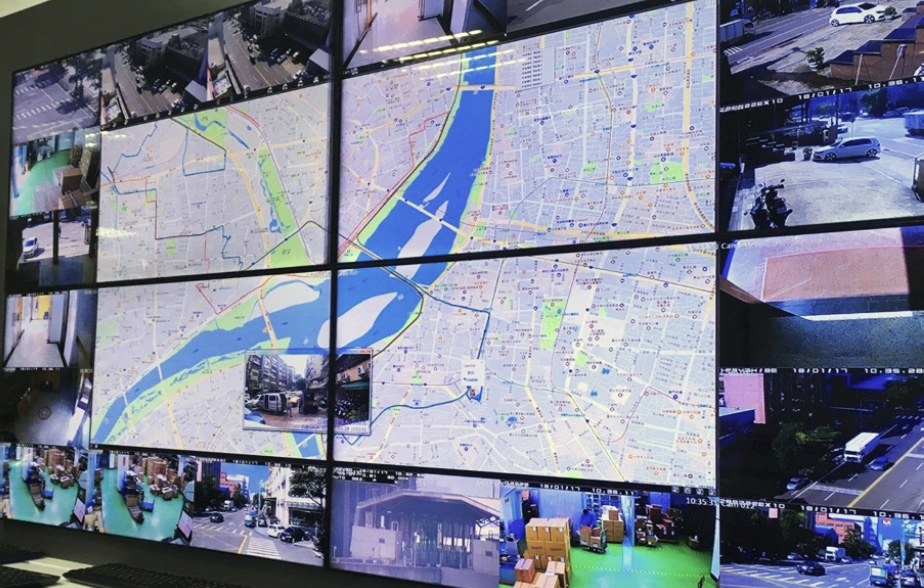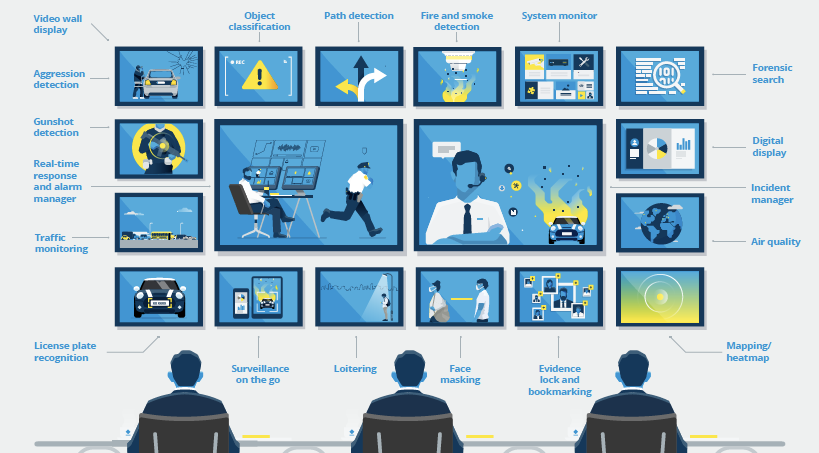Command and control situational centers as a prerequisite for the development of a safe living environment and the reconstruction of Ukraine
In the conditions of a full-scale war of russia against Ukraine, the issue of rapid response to events, prompt informing of cities residents and united territorial communities, coordination of the actions of interested services: the National Police, the State Emergency Service, the military, emergency medicine, and utilities becomes very important. At the same time, it is extremely important to ensure not only instant notification of the on-duty services, but also prompt information exchange during the work process.
The issue of correlating information from different sources and managing information has become much more important than before the war, because now time is human lives.
Notification of citizens deserves special attention. It is important to inform citizens not only about air alarms, but also about the addresses of shelters, changes in the curfew schedule, about electricity, gas, and heat outages, about the location of aid stations, about evacuation measures, air quality and possible water pollution, etc.
All these tasks can be solved by the creation of local and regional situational and command centers, which will combine the existing infrastructure management, communications and security systems and provide new tools for the work of utilities and emergency services.
It is important to pay special attention to the versatility and reliability of the platform that will ensure the operation of the situation center – the platform must perform the tasks of collecting, processing and managing physical security information (PSIM), managing information and events of information security (SIEM), collecting and processing information from various sensors (both IoT and analog).
How to choose a platform for creating a situational and command center
There are several main approaches to choosing a platform:
The first is the use of several software products with their further integration. The advantages of this approach are the flexible possibility of choosing solutions that are more effective in terms of the price/quality of solutions for solving each task (or group of tasks). It is necessary to remember the significant drawback of this approach – the need for deep and seamless integration at the core level for flexible work with incidents, as well as ensuring access to information from all subsystems in a single interface. Analysis of this approach in the framework of a number of projects has shown that in real life this approach is extremely difficult and even unsustainable. After all, the resources and time required for the complex integration of disparate products and maintaining their compatibility within the framework of updating versions significantly exceed the benefits received.
The second approach is the use of professional PSIM, SIEM or IoT platforms that allow you to meet all the customer’s requirements. This approach is more justified, because before the start of implementation, you can study, compare and test several platforms and choose the option that best suits your project. At the same time, you may encounter some difficulties, for example, if you choose a PSIM platform and want to add to it the functions of managing information and information security events (SIEM elements), or entrust the system operators with the functions of a contact center, or integrate IoT subsystems. In this case, with a very high probability, the final solution will be the use of different platforms with integration at the level of exchange of information about events.
In fact, at the request of the market, a third approach to building command and situation centers has already appeared – the use of modular PSIM, SIEM & IoT platforms, which allow to ensure the fulfillment of all customer requirements. At the same time, modules that will not be used are simply turned off until they are needed. The use of modular architecture, created on the basis of a single core, allows you to get the most flexible functionality and deep seamless integration between modules and system components. In the process of choosing a design solution for creating a situational and command center and comparing various approaches and software products, in most cases this approach is the most justified and promising.

Functions to be performed by the integration platform
Modular platforms for the construction of situational and command centers allow to ensure effective management of the infrastructure of the city, the united territorial community and to combine all infrastructure in a single command center:
- Municipal and city transport
- Heat and water supply engineering systems
- Road traffic control systems
- Traffic light management
- Traffic analytics (both people and vehicles)
- Video surveillance systems and security systems
- License plate recognition systems, event detection, face recognition, fire detection, military equipment recognition
- Traffic violation detection system
- Environmental sensors for monitoring air quality, water quality, Detection of hazardous chemicals
- IoT sensors
- Management of parking lots
- Notification systems
- Alarm buttons
- Contact center
- Forecasting systems
- City lighting control
- Infrastructure construction and management
- Building management systems (including elevators)
- City infrastructure maintenance systems
- Waste management – optimization of garbage collection and processing
- City registers
- Portal with services for citizens
- The system for evaluating the performance of employees of utility enterprises and contracting organizations
Modular platforms provide users with high situational awareness and enable the use of additional tools for situational and command center operators, for example, OSINT for searching, collecting and analyzing data from open sources and tracking trends. Mobile applications with the possibility of sending text messages, photos and videos, notifications and working out standard operating procedures, etc. Systems of training and evaluation of key performance indicators of users, joint planning tools, etc.
Given that information technologies provide our daily life in all areas, and the enemy uses any of our weaknesses, information security and reliable protection of personal data have become everyone’s responsibility. We have to be conscientious about the alleged accidental malfunctions of the DJI Aeroscope and its consequences, the possibility of easy eavesdropping on unencrypted radio stations, the dangers of cameras and surveillance software with backdoors. Therefore, when choosing a platform for a situation center, special attention should be paid to its security, which must be confirmed by national and international certificates.

Implementation of command centers
An important part of optimizing the work of emergency and utility services is the creation of protocols and work regulations for operators and system users. Algorithmization of actions and control of their execution allow to ensure a high level of communications and prompt processing of incidents. A built-in business analytics system must be used for high-quality analysis and making the right management decisions.
It should be noted that even under the conditions that the creation of situational and command centers at the level of united territorial communities or small cities is vitally necessary, very often this step is not a commercially justified. But there is a proven solution – the creation of regional situational centers with the provision of access to the regional system to cities and local authorities. Such situational centers are capable of supporting the work of local users from various services and departments and will allow transparent data exchange at the regional level.
The implementation of situational centers for forecasting, monitoring, recording, processing and liquidation of incidents, managing their consequences and forecasting is a necessity today.
The creation of such security centers and their subsequent unification at the regional and national level will improve the coordination of the activities of territorial executive bodies, law enforcement agencies and emergency services and will ensure an increase in the level of public safety and the creation of a safe environment for citizens.
Anton Mieshkovoi
Complex security system expert
Managing partner IQ Trading

